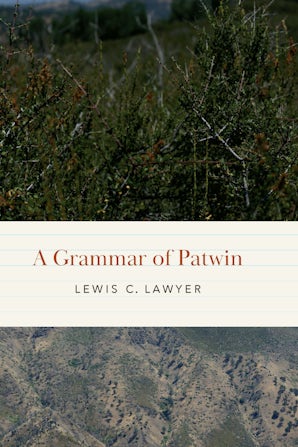List of Illustrations
List of Tables
Acknowledgments
List of Abbreviations
Alphabetical List of Morphemes
1. Background
1.1. The Patwin Language
1.2. Materials
1.3. Grammaticography
1.4. Orthography and Formatting
2. Phonemics and Phonetics
2.1. Phoneme Inventory
2.2. Minimal Pairs
2.3. Detailed Phonetic and Phonemic Descriptions
2.4. Stress and Intonation
3. Phonology
3.1. Phonotactics
3.2. The Syllable
3.3. Words and Stems
3.4. Stress Assignment and Syllable Weights
3.5. Segmental Phenomena
3.6. Reduplication
3.7. Loanwords
4. Nominals and Nominal Morphology
4.1. Introduction
4.2. Nouns
4.3. Kinship Terms
4.4. Nominalized Verbs
4.5. Number Marking
4.6. Case Marking
4.7. Absolutive Suffix
4.8. Vocatives
4.9. Order of Morphemes
4.10. Verbalization
4.11. Compound Constructions
5. Pronouns
5.1. Tables of Forms
5.2. Roots
5.3. Suffixes
5.4. Verbalization
5.5. In-Law Address Forms
5.6. Doubled Pronouns
6. Nominal Modifiers and the Noun Phrase
6.1. Pronouns as Modifiers
6.2. Adjectives
6.3. Numerals
6.4. Quantifiers
6.5. Relative Clauses
6.6. Nominal Coordination
6.7. Headless and Discontinuous Noun Phrases
7. Directionals and Cardinals
7.1. Directionals
7.2. Cardinals
8. The Verb and Verbal Morphology
8.1. The Verb Stem
8.2. Verbal Suffixes
8.3. Event and Participant Plurality
8.4. Nominalization
8.5. Verb Compounding
8.6. Citation Forms
9. The Clause
9.1. Auxiliary Verbs
9.2. Particles
9.3. Subordinate Clauses
9.4. Negation
9.5. Comparative Constructions
9.6. Clause Coordination with Connector /=ʔu/ ‘CONN’
Appendix: Attested Pronouns by Dialect
A.1. Tables of Attested Pronouns by Dialect
A.2. Discussion of Pronoun Data
Notes
References
